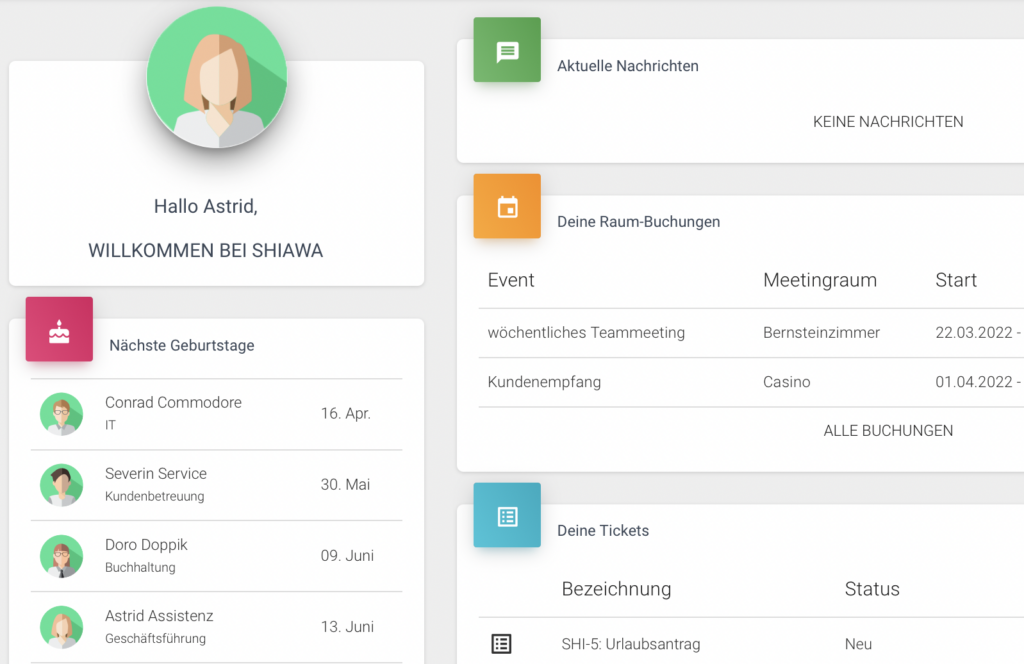In recent decades, companies have been confronted with increasing environmental complexity and dynamics. In addition, there is progressive technological development, aswell as constantly changing and increasing customer demands. In order to be able to embrace these changes, many companies need to adapt the internal organisation and management of their employees. Increasingly complex work processes require new, decentralised structures and make the company’s individual employees an essential success factor. This poses new challenges for HR managers in terms of employee management. Instead of viewing them merely as a production factor, the employee must be motivated through differentiated measures to a desired work behaviour that is in line with the organisational goals of the company.
Corporate organisation as a key component
Running a company efficiently and transparently requires a solid business organisation. The concept of organisation is an integral part of economics and business administration, describing and prescribing the rules and structures of a company. The more division of labour takes place in a company, the clearer rules, tasks and rights must be defined. This is the foundation necessary to establish processes and grow strategically in a targeted manner. In this context, it is important to ensure that the organisational structure and process organisation are chosen appropriately for one’ s company and are clearly structured. Poor company organisation can have quite an impact on employee satisfaction. Above all, it is important to ensure open communication and to clearly split responsibilities in order to avoid misunderstandings and to enable a smooth workflow.

Why are motivated employee so important?
Employee motivation revolves around influencing employees of a company in such a way that their actions, attitudes and behaviours towards colleagues and superiors have a positive impact on the company and their daily work. It is up to the respective executives and HR managers to create positive incentives for employees, to strengthen motivation and thus to sustainably increase general satisfaction and willingness to perform.
Fact Sheet
The concept of motivation can be divided in two categories:
Extrinsic motivation
“I do it because it’s necessary.”
Classic examples for this motivation are bonus payments or warnings. However, various studies show that the prospect of more money is not very effective and has a short-term effect. Completing a task only because the superior demands it has hardly anything to do with motivation whatsoever. Instead, this leads to a highly situation-dependent effort or service by the book.
In environments that demand this approach, extrinsic motivators may be useful and appropriate, though.
Intrinsic motivation
“I do it because I want to.”
The focus of this motivation is on the meaning and added value of the work, instead of reward or punishment. Of course, extrinsic factors such as recognition, praise and increased pay also play a role here. Intrinsic motivation, however, is much more sustainable, as intrinsically motivated employees perceive a sense of meaning in their work that goes beyond economic purposes.
In a nutshell
Employee satisfaction within the company results in the following benefits:
- Higher output
- Increased productivity
- Lower absence
- Less fluctuation
- Highter customer satisfaction

What motivates employees?
So how can employees be motivated? The common building block of all motivational methods has one thing in common: YOU contribute quite a lot to whether your employees enjoy coming to work! This can be promoted through the following management measures:
A welcoming and positive working atmosphere
Above all, mental well-being ensures a pleasant working atmosphere. Everyone should feel comfortable and get along with colleagues, at least professionally, so that cooperation is guaranteed. Part of a pleasant working atmosphere is also a decent workspace. Bright, well-designed offices, ergonomic furniture and shared spaces for breaks and discussions are particularly important (see article “increasing team productivity”)
Responsibility and trust
Trust and responsibility are also of great importance for staff motivation. Employees want to grow freely and to contribute to the companys’ success. By transferring responsibility to its employees, an employer also gains their trust.
Open communication and feedback culture
All too often, mistakes arise from a lack of communication between colleagues or towards superiors. It is therefore important to communicate one’s expectations clearly and to give constructive feedback, especially in context with new tasks. Managers should also make clear that mistakes are allowed and serve as a good learning opportunity for everybody (provided the staff is not a team of neurosurgeons).
Further methods
Other incentives include a modern management style where the supervisor acts as a role model, monetary rewards as part of an overall concept, the opportunity for further development and flexible working hours. Of course, it should be noted that the methods and examples mentioned are only effective if they fit the employees of the respective company and the industry norms.

Conclusion
A successful work organisation requires the company to take their employees and respective their individual goals and needs into account. This is the premise for them to feel sustainably motivated and committed to contributing their share to the company’s success.
In order to motivate employees, intrinsic and/or extrinsic motivation should be sought, depending on the nature of the task. A variety of further methods, such as creating a more pleasant atmosphere or granting employees more responsibility, can be applied additionally. However, one should choose the measures according to the respective employee.




